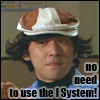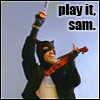If Bill Condon’s going to keep making such great movies, I guess it’s OK that he only makes ‘em once every six years or so. Kinsey was awfully good. Not perfect, but awfully good.
You have to start with Liam Neeson, who turned in a brilliant performance, not stinting on either Kinsey’s flaws or his strengths. Laura Linney is the obvious key co-star, but I gotta say nice things also about John Lithgow, who was perfect as Kinsey’s father. The movie explores, briefly, the way in which Kinsey became as much a preacher as his father was, and that would not have worked half so well if Neeson and Lithgow hadn’t worked so well together.
Not that Linney and Neeson weren’t great in conjunction. They’re young together and middle-aged together and old together and the passage of time is sketched out by the way the pair becomes comfortable with one another. If they gave Oscars for best joint performance, these two would get one. Since they do give out SAG awards for best cast, maybe that’ll make up for it a bit. I hadn’t realized how good the cast was: Oliver Platt, Tim Curry, Dylan Baker, Timothy Hutton, yum.
What you get out of such a good cast, in part, is the ability to create yet another brief focus of Kinsey that I really enjoyed. I think Condon absolutely nailed the tension that arises from attempts to liberate sex from emotional ties. There’s a strong taste of this in Kinsey’s own personal life, and later on, when his staff slips into polymorphous sensibilities, there’s a great five or ten minute sequence which eloquently shows the problems that can arise. Couldn’t have worked without such a strong cast.
You know, it’s a real stocking full of presents, this Kinsey. There are a lot of fairly brief brilliant explorations of various subjects — the realization that one’s bi-sexual, Kinsey’s relationship with his father, the tension of polygamy, the competition between Kinsey and Tim Curry’s character, the way Oliver Platt’s character comes to appreciate what Kinsey brings to the university… and yeah, this is about the only quibble I had with the movie. Condon’s good enough to hit each topic with unexpected depth, but you get to wishing he’d linger more. Whoops, Kinsey’s had his realization about sex with other males; time to move on to the next topic. Bit of a whirlwind.
On the other hand, the underlying themes — Kinsey’s emotional life and the celebration of diversity — continue throughout. And man, are they ever worth it. What a tremendously cool movie.
Anything else? I didn’t think the framing technique quite worked. The movie starts with Kinsey training his students on interview techniques by making them interview him, and that’s filmed in black and white. This is interspersed with flashbacks to his childhood, in color, which threw my time sense off. (“Shouldn’t the flashbacks be black and white?”) Then midway through the movie the flashbacks catch up with the frame and the frame vanishes. Didn’t work for me.
Still — pretty minor caveats. I enjoyed Kinsey a lot.


